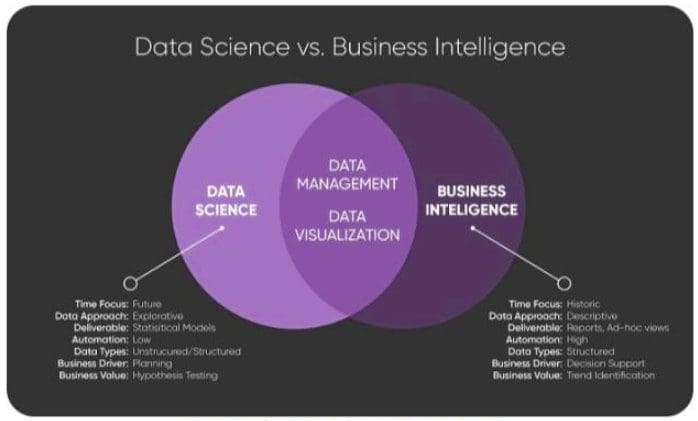Supply-Chain Hack Breaches 35 Companies, Including PayPal, Microsoft, Apple

“The vast majority of the affected companies fall into the 1000+ employees
category, which most likely reflects the higher prevalence of internal library
usage within larger organizations,” Birsan noted. The researcher received more
than $130,000 in both bug bounties and pre-approved financial arrangements with
targeted organizations, who all agreed to be tested. The hack’s original target
PayPal, as well as Apple and Canada’s Shopify, each contributed $30,000 to that
amount. Birsan said he came up with an idea to explore the trust that developers
put in a “simple command,” “pip install package_name,” which they commonly use
with programming languages such as Python, Node, Ruby and others to install
dependencies, or blocks of code shared between projects,. These installers—such
as Python Package Index for Python or npm and the npm registry for Node–are
usually tied to public code repositories where anyone can freely upload code
packages for others to use, Birsan noted. However, using these packages comes
with a level of trust that the code is authentic and not malicious, he observed.
Continual Learning will be the Cornerstone to Success

In the Fourth Industrial Revolution, the urgency to future-proof and transition
careers has required nothing short of a reskilling revolution. According to
global Salesforce research, since the onset of the pandemic 40% of the workforce
have considered a career change. As the digital economy continues to evolve,
businesses don’t just have a responsibility to provide employees opportunities
to retrain and transition to the jobs of the future. It’s increasingly within
their interest to do so. Now more than ever, people need access to the
technologies and skills necessary to land the jobs of the future. This why at
Salesforce we launched Trailhead in 2014, our free online learning platform, to
democratise education and provide an equal pathway into the tech industry. Since
the onset of the pandemic we’ve seen a 37% increase in registrations to courses
– joining over 2.2 million learners gaining technical, business, partner, and
soft skills. Delivering in-demand skills and resume-worthy credentials, we’re
addressing the skills imperative and equipping people with the tools they need
to succeed. As a society, we need to continually ask ourselves whether we
are doing enough to provide everyone with the opportunity to
participate.
Artificial Intelligence In The Corporate Boardroom

With respect to accountability – human directors’ decision-making should not be
replaced or influenced by unaccountable artificial intelligence’s
decision-making. I warn that using artificial intelligence to make decisions in
boardrooms could lead to a void of accountability. The use of artificial
intelligence in boardrooms could raise other issues as well. ... Human
directors, who have consciousness and a conscience, would be accountable;
whereas I do not know how AI-directors could effectively be held accountable.
This would be an instance in which the risk that directors lose their
independent judgment intertwines with the accountability issues possibly arising
from the use of artificial intelligence in corporate boardrooms. ...
Philosophers warn us that if artificial intelligence developed a conscience and
consciousness, it could also possibly experience suffering. Uber-intelligence
could lead to uber-suffering. As I wrote in my article, “no potential benefits
resulting from the use of AI in the boardrooms, in corporate governance, or in
other settings could be worth the risk that artificial agents could suffer; even
more drastically, no potential benefit resulting from the use of AI is worth the
risk that relations between natural beings and artificial beings could evolve
into exploitative relations.”
Developers: This is the one skill most likely to get you hired, according to IBM

The conclusion falls in line with the findings of a recent study by the Linux
Foundation, which found that hiring managers are 70% more likely to hire a
professional with knowledge of open cloud technologies. At the same time, the
same report showed that 93% of respondents were struggling to find sufficient
talent with open-source skills. Mastering open-source tools and programming
libraries can add a lot of value to a developers' CV, therefore. Among the most
important tools to add to developers' skillset, Linux featured prominently, with
an overwhelming 95% of developers saying they considered the technology to be
important to their career; but the understanding of containers and databases
also ranked high. IBM's latest research comes in the midst of increasing
interest in open-source software, and a desire to tap the technology to create
value. Not-for-profit think tank the OpenForum Europe recently found that the
open-source ecosystem was contributing up to €95 billion ($113.7 billion) per
year to the EU's GDP; and that even a marginal increase of activity could boost
the continent's wealth by hundreds of billions of euros.
Is it time to ban ransomware insurance payments?

Erin Kenneally, director of cyber risk analytics at Guidewire, and previously a
staffer in the US Department of Homeland Security’s cyber division, says
dialogue is needed to disincentivise both the supply-side and the demand-side
for ransomware payments – banning insurance payments would evidently fall under
the former approach. She also highlights that current light touch interventions
for ransomware have been shown to be ineffective. “The US, for example, has
issued an Office of Foreign Assets Control [OFAC] advisory on the sanction risks
of paying ransoms and a FINCEN Advisory on reporting ransomware red flag
indicators. To date, there have been no civil penalties levied against victim
companies, insurers or response firms for paying or facilitating the payment of
cyber extortion,” she says. “In a nutshell, since the ransom is often lower than
the cost of recovery, business interruption and lost business – the convergence
of which can spell financial death – many victims and insurers simply pay the
ransom and risk sanctions. “As a result, insurers have taken a rational
economics approach to ransomware payments, leading to a growing sentiment that
the industry is worsening the problem by paying extortions.”
Are Autonomous Businesses Next?

The most extreme form of automation is an autonomous system that operates
without human intervention. That's not to say that autonomous systems don't need
oversight, however."Automation is a necessary, functional component of an
autonomous system. 'Autonomous' implies a degree of artificial intelligence,
decision making that is not necessarily rule or workflow based, rather taking
actions based on new patterns that are not hard coded into the system," said
Robert Greene, senior director, Oracle Autonomous Database product management.
"Automation…still requires a human to make the decision to invoke [an] action,
so a human is still in the loop." Organizations are automating more tasks using
robotics process automation (RPA) and in some cases, they're inheriting
autonomous capabilities from the enterprise products they use such as the Oracle
Autonomous Database. "You start out by automating smaller steps with smaller
stakes, so your organization builds its internal capacity to do automation well
and learn how to make it work in hybrid situations that involve people," said
Chris Nicholson, founder CEO of deep reinforcement learning solution provider
Pathmind.
Digital transformation: Leadership imperatives for 2021

Digital tools, used appropriately and effectively, can contribute to planning
and monitoring internal processes, increasing transparency and accountability
across all levels of management, and building customers’ trust. Digital tools
are not only helping leaders solve complex issues related to personnel and
minimizing operational costs, but also improving decision making. However,
leaders will have to verify the suitability of tech tools being implemented in
relation to organizational needs and objectives. These are not top-down
decisions. Leaders promoting open ways of working in their organization could
make this a more inclusive and participatory process by adopting and
implementing an approach such as the Open Decision-Making Framework. One key
factor to remember: While digital technologies have much potential to improve
organizational processes, leaders must take proactive actions and measured steps
to help employees internalize and integrate these processes. The easier that
leaders make it for employees to adapt to and use new technology in their daily
routines, the faster the integration. The hardest part is often the change
management: Leaders need to facilitate this in a way that instills a positive
attitude in employees.
How the SRE Role Is Evolving

First, not all companies have embraced an SRE model. A recent study by Blameless
found “… 50% of respondents employ an SRE model with dedicated engineers focused
on infrastructure and tooling, or an embedded model where full-time SREs are
assigned to a service.” The SRE model is gaining momentum, but there is still
room for greater adoption. There is also room for internal growth. Ostrowski
sees a single SRE team as a single point of failure. “It needs to be a whole
department,” he said. In addition, SREs are gaining a more prominent voice at
the table, influencing feature rollout. “With proper and mature SRE involvement,
teams can’t willy-nilly deploy,” he said. Ostrowski views these teams as
maintaining a critical balance between business risk and introducing new
technology. Many companies are experiencing rising user demands, and thus must
rapidly scale their application networks. Simultaneously, there has been a
Cambrian explosion of deployment types — systems could be using any assortment
of legacy infrastructure, mainframe, microservices, cloud environments and
multiple cloud vendors. “The complexity and topology of the IT space has grown
substantially, with many interdependencies,” Ostrowski said.
Data Science vs Business Intelligence, Explained

You will recognize business intelligence by its charts, dashboards, database
diagrams, and data integration projects. It is expensive and frustrating -- but
indispensable. BI has a permanent advantage over DS because it has concrete data
points; few, simple assumptions; self-explanatory metrics; and automated
processes. Furthermore, BI will never go away. It will always be a work in
progress because you will never stop changing your business or upgrading and
replacing the source systems. ... Looking in the rearview mirror of data is
important and helpful, but it's limited and will never get you where you want to
go. At some point you need to look ahead. BI needs to be accompanied by data
science. DS is a complicated, sophisticated form of planning and optimization.
Examples include: Predicting in real time which product a customer is most
likely to buy; Forming a weighted network between business micro events and
micro responses so that decisions can be made without human intervention, then
updating that network with every outcome so that it learns as it
acts; Forecasting at the SKU level, by day, with every
sale; Identifying and predicting rare events, such as credit card fraud,
and sending automatic notifications to customers and/or staff;
Piercing the Fog: Observability Tools from the Future
When we talk about observability, there are two sets of tools: specific
observability tools, such as Zipkin and Jaeger, as well as broader application
performance monitoring (APM) tools such as DataDog and AppDynamics. When
monitoring systems, we need information from all levels, from method and
operating system level tracing to database, server, API call, thread, and lock
data tracing. Asking developers to add instrumentation to get these statistics
is costly and time consuming and should be avoided whenever possible. Instead,
developers should be able to use plugins, interception, and code injection to
collect data as much as possible. APM tools have done a pretty good job of this.
Typically they have instrumentation (e.g. Java agents) built into program
languages to collect method-level tracing data, and they have added custom
filter logic to detect database, server, API call, thread, and lock data tracing
by looking at the method traces. Furthermore, they have added plugins to
commonly used middleware tools to collect and send instrumented data. One
downside of this approach is that the instrumentation needs will change as
programming languages and middleware evolve.
Quote for the day:
"Coaching isn't an addition to a
leader's job, it's an integral part of it." -- George S. Odiorne
This looks very intriguing
ReplyDelete